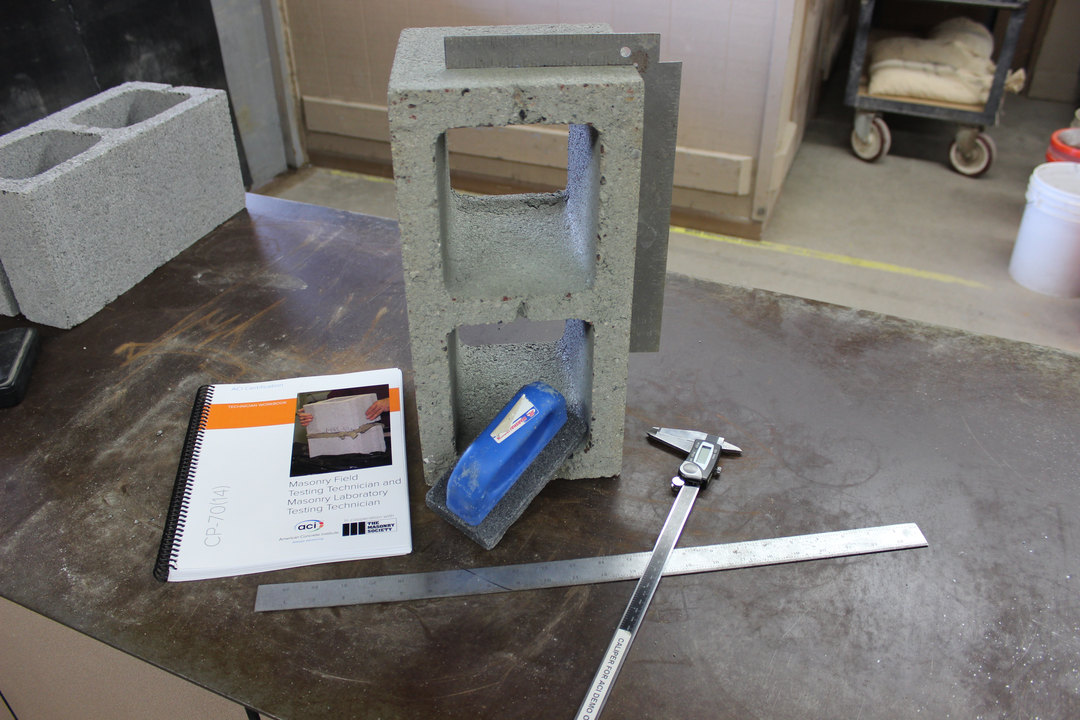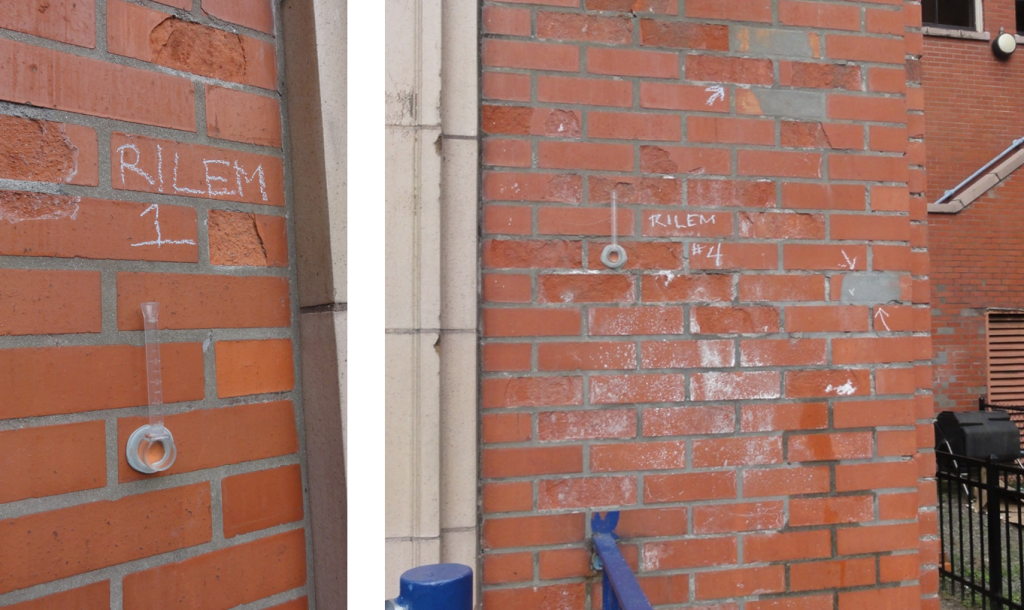The Best Strategy To Use For Masonry Field Testing
Table of ContentsIndicators on Masonry Field Testing You Should KnowMore About Masonry Field TestingHow Masonry Field Testing can Save You Time, Stress, and Money.The smart Trick of Masonry Field Testing That Nobody is Talking AboutRumored Buzz on Masonry Field Testing
For D and also E wall surfaces, the anchors were mounted both in the center of the devices (B) and in the mortar (once again vertical, horizontal and also corner) joints. For wall C, due to its low mortar joint density, the supports were set up only in the middle of the devices. The pull-out ability of each of the 108 tested anchors was for that reason registered and also results specified as explained in the adhering to paragraph.5. The matching performance proportion goes from 0. 12 (h = 90 mm) to 0.
Effectiveness of the anchors mounted in wall surfaces An as well as B, in headers (a); cots (b); mortar joints (c)Concerning the sorts of failings observed in the experimental campaign, the complying with modes can be recognized: SF sliding failure; BPF brick pull-out failing; BCF brick-cone failure; MBIF mortar block user interface failing. It merits to see that the range from the support to the reaction points of the tool, being concerning 15 centimeters, can hinder the formation of possible brick-cone failings, although this kind of failing is typically rare for anchors in stonework - masonry field testing.
Masonry Field Testing for Beginners
Because of the troubles in discerning the failure kinds and to the poor number of examinations successfully settled, these results are left out from a logical interpretation. Combined gliding failing as well as block cone failing (a) as well as incorporated gliding failing and block failing (b).
As we talked about above, Rebound Hammer and also Ultrasonic Pulse Velocity are one of the most extensively utilized NDT approaches for reviewing concrete stamina in existing frameworks (Combined techniques includes a mix of NDT approaches for predicting the on-site toughness of concrete. The combination of UPV and also Rebound hammer has been studied by numerous scientist.Blocks are typically utilized in the building and construction of numerous kinds of Frameworks. Bricks are just one of the basic material which is generally made use of for the building and construction of the walls. Blocks should be checked as well as examined on-site before using them for construction purposes. It is very essential that the blocks ought to pass all the called for standards given by the As a civil designer, you ought to know the different which are utilized to examine the high quality of bricks.
It is really essential that bricks ought to experience different examinations to understand it's suitability in the construction work. There are primarily two types of tests are carried out on the bricks which are the as well as The Lab Tests are those which are performed in the lab with the aid of different tools as well as sorts of machinery - masonry field testing.
The Tests which are accomplished in the lab are the crushing strength examination on blocks, water absorption test, porosity test on blocks, efflorescence examination on blocks, and the dimensional security examination. Field Tests likewise play a vital duty which is very handy to check the bricks top quality present on the site.
The Greatest Guide To Masonry Field Testing
Also, Read: 20 Sorts Of Plumbing Water Lines for Different Use Here, two different components split the brick examination. One component lab test on bricks and the 2nd component think about a field test on blocks. All kinds of examinations on block full information and specification are as complies with. Inside laboratory test on brick, different kinds of test on blocks like Water absorption test, squashing toughness test, efflorescence examination, and dimensional stability examination.
The bricks are soaked in water for at area temperature and also after that evaluated. Let its Weight be The percent of water absorption of blocks = As per Indian standards, the amount of water that is soaked up by the blocks must not be more than 20% of its Dry weight.


The water absorption for class 2 block need to not be other above of its Dry weight. The water absorption for course 3 brick should not be even more than of its Dry weight. Read: Which Cement Is Best for Residence Building Different Types of Concrete as well as Usage The squashing stamina of brick is identified by utilizing a compression screening equipment in the lab.
The all the values of the analyses at the point of crushing or write suggests the crushing toughness of the bricks. The minimal compressive toughness of block is The quality A brick for the first class brief have the squashing toughness value ranges in between. In the Efflorescence examination the presence of soluble salts is established.
Excitement About Masonry Field Testing
After the bricks are entirely dry the correct monitoring of the bricks is done. If there is no grey or white deposit exists on the surface area of the blocks then it shows the lack of soluble salts. If there is any kind of white deposit is existing externally of the brick, after that there will certainly be efflorescence and also it is necessary that block must be treated before made use of in building.
When of the bricks is covered with a thin deposit of salt after that the distinction is in When there is a heavy deposit of salt that covers upto of the area of the block surface then the Efflorescence will be in When the exposed surface area of the brick is greater than affected by the hefty down payment of salt, then the bricks remain in the her comment is here Efflorescence condition.
Read: What Is Superstructures Difference In Between Load-Bearing and Framed Structures In the dimensional security test, the bricks are wetted, there is a modification in volume as well as linear measurement. The resistance to alter of quantity is called Dimensional The blocks are saturated with water suggests 0. 02% straight expansion which is typical.
Bricks should likewise reveal dimensional stability when they are warmed. The firmness examination of blocks is used to establish the resistance of bricks to abrasion.
Masonry Field Testing Fundamentals Explained
After making scrapes externally of the blocks, if there is any type of perception is left on the brick, after that the brick is not adequately tough to put on. There must not be any kind of impact left on the block after scraping it with nails. Read: Difference In Between Fat Lime and also Hydraulic Lime What Is Fat Lime What Is Hydraulic Lime The stability test is likewise among one of the most important examinations which are typically utilized to inspect the top quality of the bricks on the official website construction website.
In the strength test, the 2 bricks are struck with each other. The brick should not damage while it was struck with each other but it needs to you a The metal ringing audio of the blocks shows the good quality of the bricks. In the effect examination of the blocks, the block is allowed to go down flat from a height of on the ground.
If the block gets broken or squashed right into pieces after that, it indicates the most effective high quality of the block. The sizes and shape of the block ought to be uniform as well as common dimension. The form of the standard brick must be rectangle-shaped. The blocks must have uniform colour as well as their sides ought to be right.
The blocks need to have a copper colour or reddish colour and also it need to be cost-free from fractures and also need to have sharp sides. This all the above features shows that the block is of top quality. The structure of the brick need to be compact, homogeneous, and also devoid of openings and also lumps.